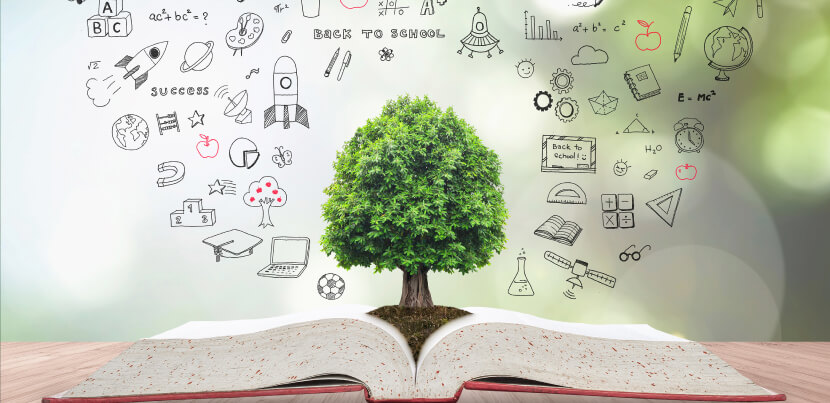The technological evolution of the public library — already a long-standing trend — continues in 2024, with no signs of slowing down. From conversational search tools that rely on natural language processing to artificial intelligence and virtual reality, emerging technologies are propelling library services into the future, which means that librarians have had to add tech expertise to their toolkit of skills.
In past blog posts, we have looked at how new technologies can streamline operations, inform collection development and generally improve efficiency.
Now, let's look at several key factors that library staff ought to consider when deciding which digital resources to offer their patrons — and how PressReader can help libraries address each of them.
See also:
-
Digital transformation and New Year's resolutions for the modern public library
-
Four library technology trends shaping the future of public libraries
1. Diversity
Public libraries can play an important role in providing diverse materials that reflect the needs and interests of patrons based in their communities. When selecting content to support diversity, here are some steps libraries can take:
Assess community needs: Identify the specific needs and interests of diverse groups within the community served by the library. Engage with community leaders, advocacy groups, educators and individuals from diverse backgrounds to gather insights and recommendations on digital tools that would be valuable and inclusive.
Consider cultural sensitivity and authenticity: Ensure that any materials selected accurately represent diverse cultures, identities and experiences with sensitivity and respect. Look for content that is created by individuals from the communities being represented.
Promote multilingualism: Include digital resources in multiple languages to cater to patrons with diverse linguistic backgrounds.
Content from around the world
A library that offers PressReader is able to meet the needs of a diverse community of patrons by providing access to more than 7,000 high-quality periodicals from all over the globe, covering topics that range from business, science and technology to art and design, and from breaking news to sports and entertainment.
Because PressReader’s catalog includes titles from more than 120 countries in dozens of different languages, it can help readers from all over the world stay connected to what’s happening locally and back home.
2. Accessibility
Ensuring that library technology and materials are accessible for people of all abilities is essential for promoting inclusivity and equitable access to information. Here are some factors that libraries should consider to achieve this goal:
Compliance with accessibility standards: Libraries should ensure that their resources comply with established accessibility standards such as the Web Content Accessibility Guidelines (WCAG), a set of recommendations developed by the World Wide Web Consortium (W3C). These guidelines are meant to address auditory, cognitive, neurological, physical, speech and visual disabilities.
Accessible website design: Libraries should design their websites with accessibility in mind, including features such as alternative text for images, keyboard navigation, resizable text and clear headings to assist users with disabilities in navigating and accessing content.
Assistive technologies: Libraries should provide assistive technologies such as screen readers, magnifiers and alternative input devices for patrons who may need them to use materials effectively.
Access for everyone
One of PressReader's mandates is to make sure that everyone can access our catalog of top newspapers and magazines from around the world. That’s why we developed PressReader Accessibility, a set of features designed to make it easier for individuals with various accessibility needs to read the content available on our platform.
These features include:
-
Keyboard navigation: Integrated keyboard navigation allows readers to browse publications with just a few taps, making it simple for those with motor disabilities or vision impairment.
-
Font enhancement: Flexible font size enables readers to enlarge or shrink the font size on our publications to fit their unique needs.
-
Article view: PressReader Accessibility extracts text from the original newspaper or magazine digital replica and presents it in a format that’s simple to navigate.
3. Sustainability

In 2019, the American Library Association adopted sustainability as a core value of librarianship, noting that “Libraries play an important and unique role in promoting community awareness about resilience, climate change and a sustainable future. They are also leading by example by taking steps to reduce their environmental footprint.”
Public libraries should consider a number of factors when selecting resources that support sustainability:
Content: Look for materials that focus on sustainability topics such as renewable energy, environmental conservation and climate change. Ensure that the content aligns with the library's mission to inspire environmental stewardship.
Publisher's practices: Research the publishers/providers of the digital content to assess their commitment to sustainability. Look for publishers who implement eco-friendly practices in their operations such as using recycled materials, minimizing waste and reducing energy consumption.
Promotion of sustainable practices: Choose materials that actively promote sustainable practices and offer information to help library patrons adopt sustainable behaviors in their personal and professional lives.
A sustainable platform
PressReader can help a library reduce its environmental impact by providing searchable, up-to-date editorial content from around the globe in a digital format, which decreases the branch's need to supply printed copies of popular periodicals.
At libraries that offer PressReader, staff can also help interested patrons find sustainability-focused publications available on the platform.
4. Trustworthiness

Ensuring that materials available through your branch are trustworthy involves several strategies and practices:
Curated collections: Libraries can curate digital collections from reputable sources. This involves selecting resources from established publishers, academic institutions, government agencies and other reliable sources.
User feedback: Libraries can encourage patrons to provide feedback on the quality and usefulness of library materials. This feedback can help identify any issues with trustworthiness and inform decisions about renewing subscriptions or acquiring new ones.
Media literacy: Providing training programs on media literacy helps patrons develop critical thinking skills to assess the credibility of online information by evaluating sources and identifying misinformation.
Trustworthy global sources
It's part of every library's mandate to provide trustworthy sources of information to their local communities. This can be a key aspect of building media and information literacy and critical reading skills — and giving patrons the opportunity look at the world and its issues from diverse viewpoints.
Librarians can library users engage with ideas from across the political spectrum by offering free access to trusted journalism with tools like Pressreader, which can open patrons’ eyes to the wide range of knowledge, ideas and perspectives to be found through high-quality journalistic stories.










